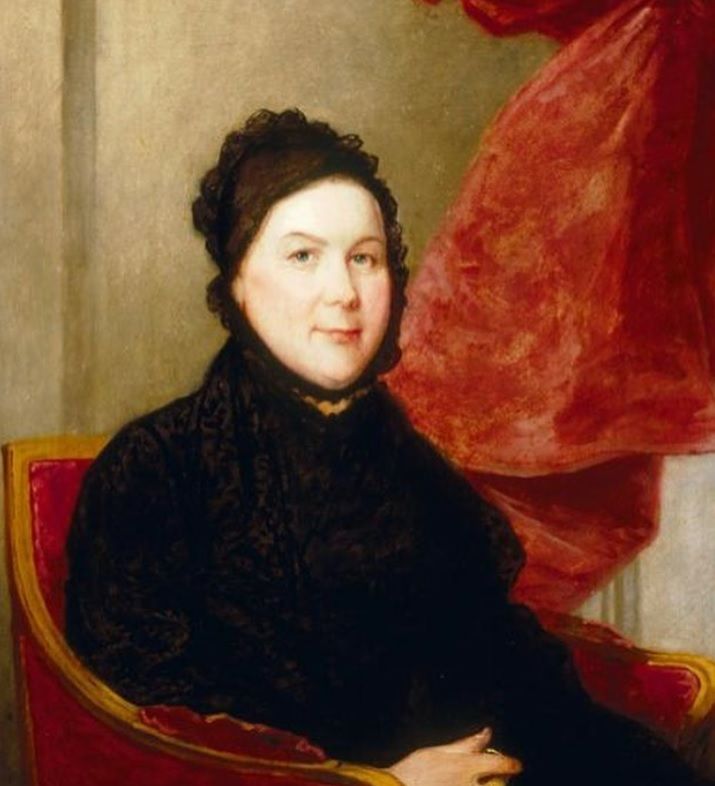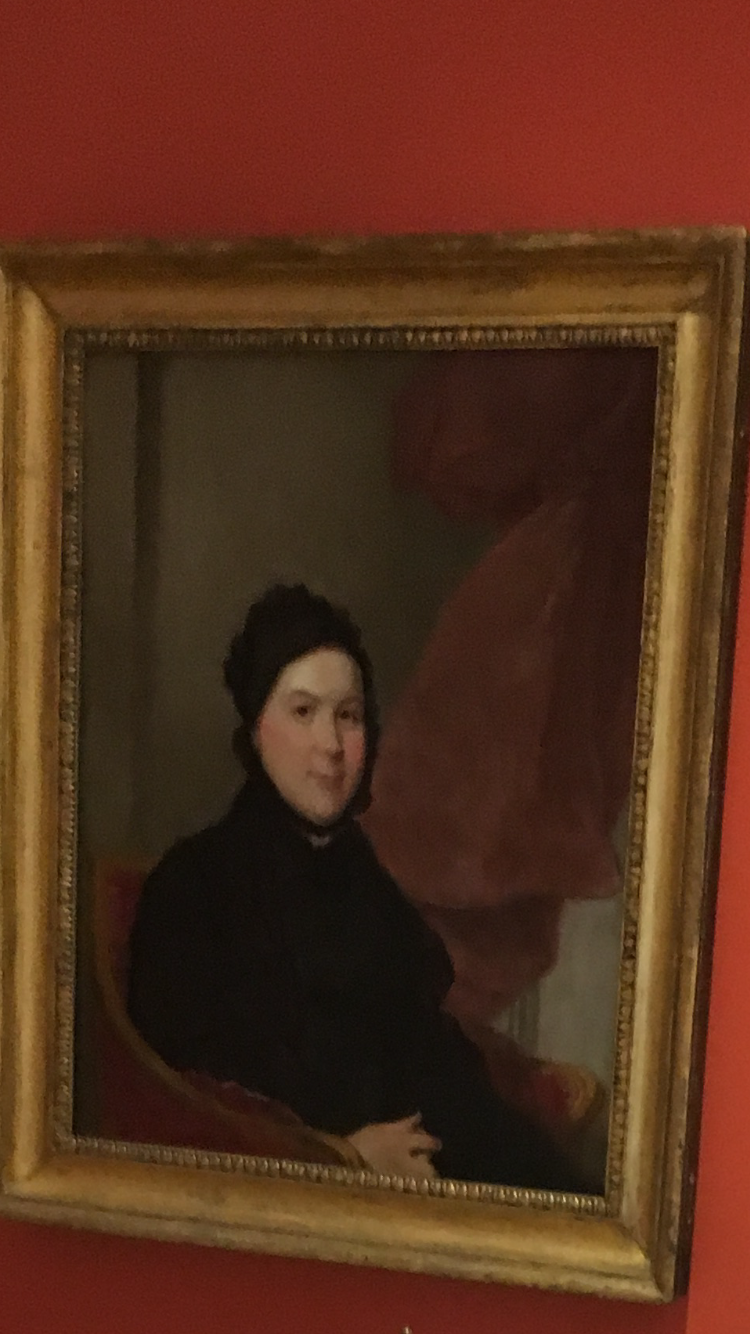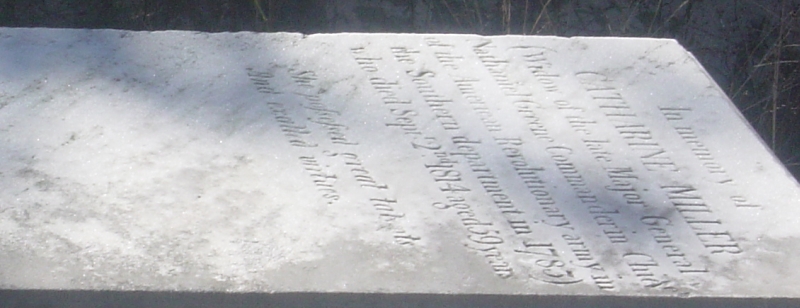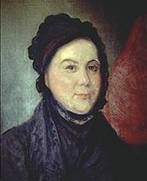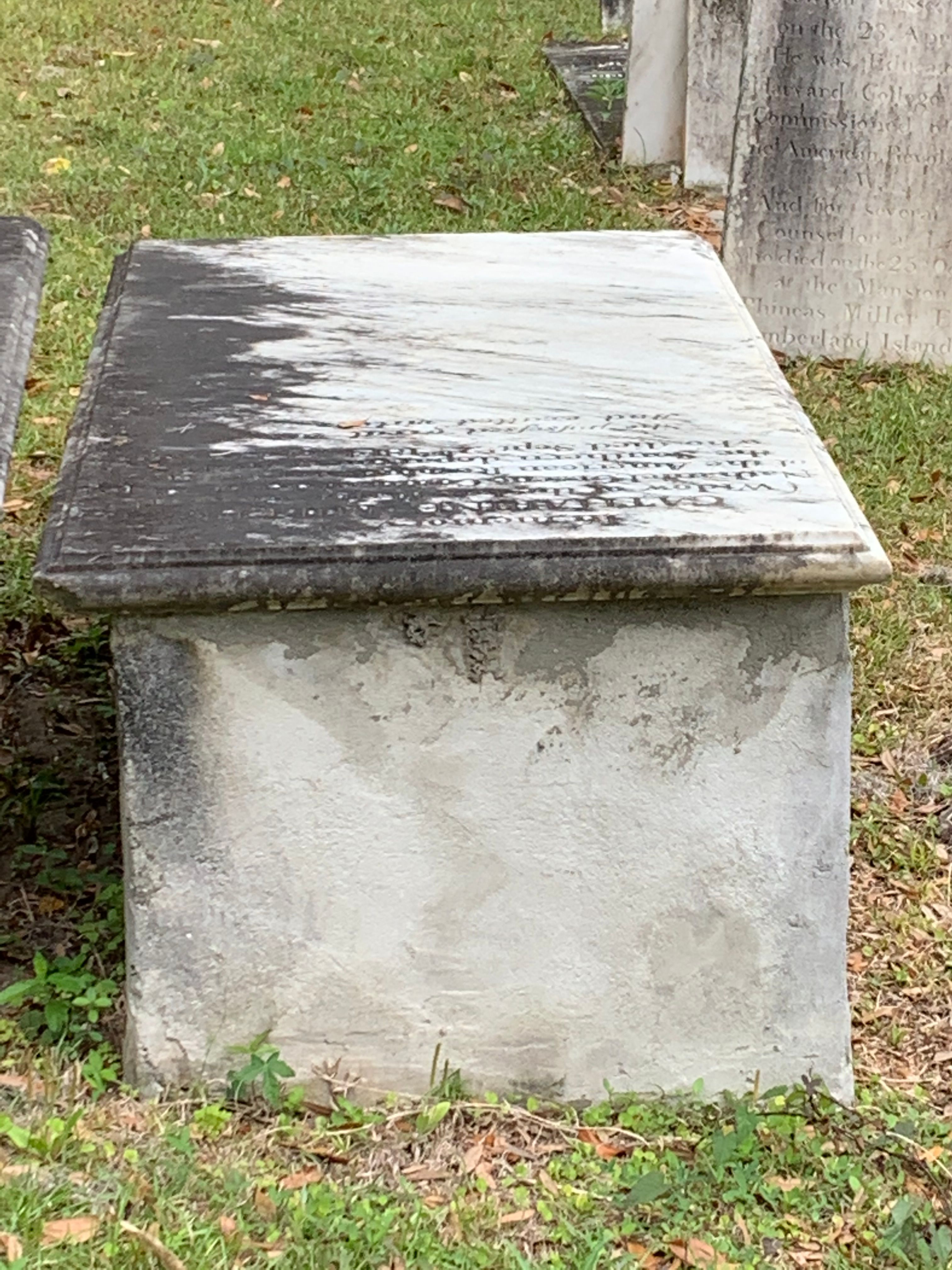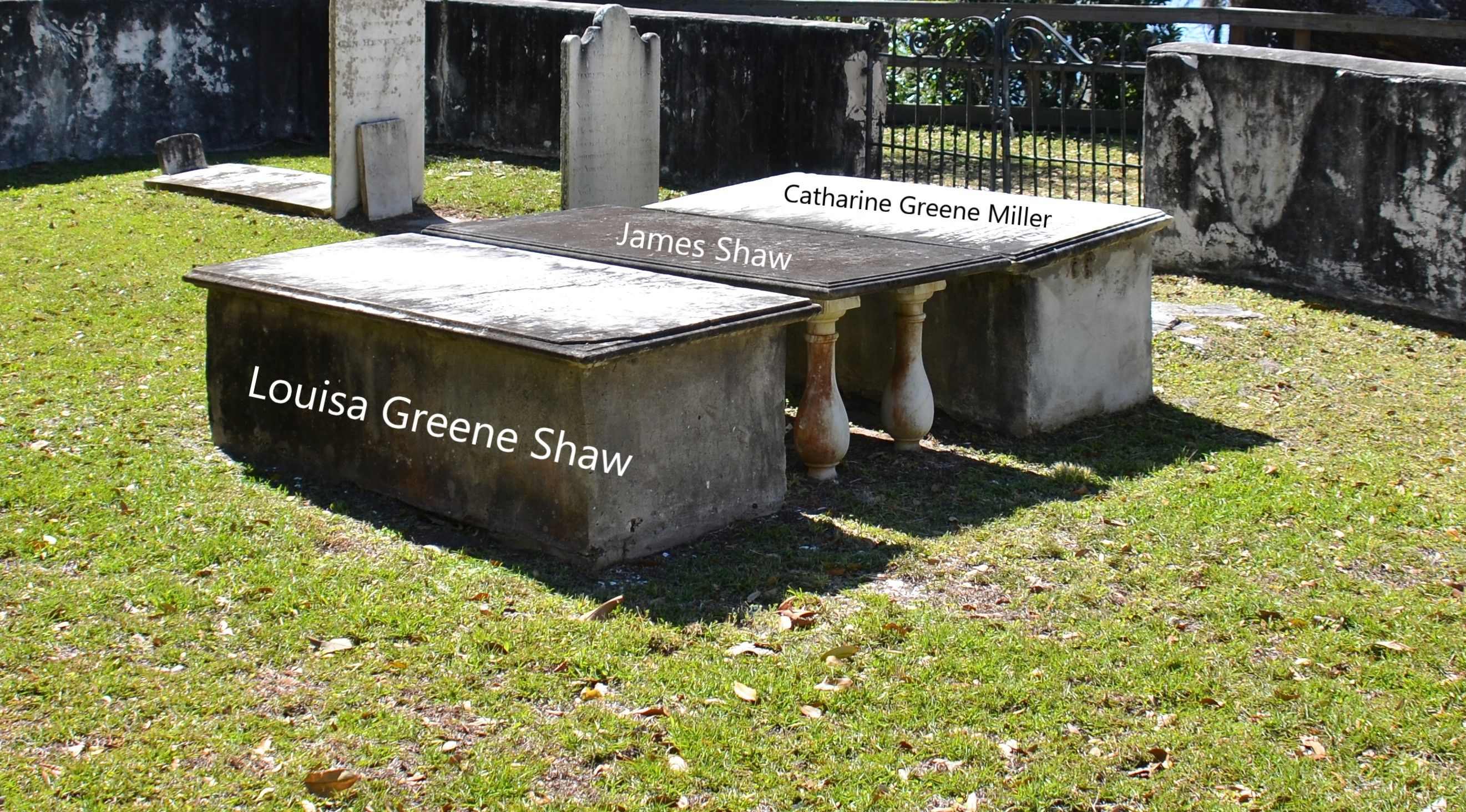Bio written in 1975 book "The Women of the American Revolution" by National Society Daughters of the American Revolution (DAR), Catharine Littlefield Greene featured on pg. 37-40:
"Catharine Littlefield Greene
A woman of great charm and beauty, Catharine Littlefield Greene proved a constant source of inspiration to her husband General Nathanael Greene, Washington's close friend and eventual commander of the Continental Army in the South. All the qualities that are associated with the great patriots of the Revolution were embodied in this dedicated and spirited woman. Her unfailing devotion not only to her husband but to the ideals of liberty and independence kept her morale high through the trying years of the war. What was perhaps more important was her gift to instill the same spirit and devotion in others during the war's darkest hours.
She was born on Block Island, Rhode Island in 1753. Orphaned at an early age, she was sent to live with an aunt, the wife of Governor William Greene, in East Greenwich. Little is known about her girlhood, except that she was an avid reader capable of retaining vast amounts of information on almost any given subject, a skill that was to make her one of the most respected women in the colonies. It was during these formative years that she met the governor's nephew, Nathanael Greene.
As a girl she was fond of horseback riding and dancing, two pastimes she enjoyed sharing with her future husband. The couple was married in 1774 and went to live in Coventry, Rhode Island, where Greene managed one of his family's iron forges.
Forseeing troubles between the colonies and Britain, Greene helped raise a militia group called the Kentish Guards. After the start of the Revolution in 1775, he was placed in charge of a force of 1,500 soldiers that joined Washington's army in the siege on Boston. So impressed was Washington with the young man, that he named Greene, then only 33 years old, as one of his brigadiers. Over the years, the friendship between the two men grew, and Greene became virtually second in command of the Continental Army.
Mrs. Greene, meanwhile, followed her husband's career closely while aptly managing his business affairs. However, her devotion was too great, and her patriotism too strong, for her to remain at home. That winter she joined her husband in Cambridge. Later, she returned to Coventry and converted her home into a field hospital for the care of soldiers stricken with smallpox.
During the course of the war, Mrs. Greene managed to spend a month or two each year with her husband in camp. She stayed most of the winter of 1777-1778 with the general at Valley Forge. Ignoring the hardships of her surroundings, she managed to maintain the warmth of a home-like atmosphere for her husband and friends. As the winter deepened and the flame of the Revolution's fervor wavered, Mrs. Greene joined with the other women in camp to help ease the despondency of the men. Several times a week their doors were opened for welcome sessions of singing and story-telling. Mrs. Greene impressed her company with her keen wit, and her knowledge, and she was described by General von Steuben's secretary as a "handsome, elegant, and accomplished woman. ..."
Later that same winter, when promised supplies failed to arrive in Valley Forge, Mrs. Greene was one of the first to assist Mrs. Washington in caring for the sick and dying. Through her assistance in this systematic relief work, Catharine Greene earned recognition as a devoted, self-sacrificing patriot.
After the war, the Greenes moved to an estate in Georgia. Throughout most of their 12 years of marriage, they had been together only periodically. Now at last it looked as if they would enjoy the pleasures of quiet domestic life. However, in June 1786, Nathanael Greene died. Shortly thereafter, Mrs. Greene lost a son in a swimming accident. Yet her spirit and love of life remained as strong as ever. She carried on the work of the plantation and saw to the education of her surviving children.
The same sense of hospitality that played so important a role at her home in Rhode Island and at Valley Forge never faltered. After his famous duel with Alexander Hamilton, Aaron Burr traveled through the South and asked permission to stop off at Mrs. Greene's house. Hamilton had been a close friend of hers, and she grieved over his loss. However, her sense of hospitality and duty to a fellow patriot transcended her grief, and she opened her house for Burr.
Another famous houseguest of Mrs. Greene's was Eli Whitney. It was through her encouragement and patronage that the young inventor began experiments on a machine to separate cotton from its seeds. In the spring of 1793, Whitney unveiled the cotton gin.
Catharine Greene died in 1814. Her vitality and courage had renewed the spirit of many patriots during the grim winter at Valley Forge. And her sense of sacrifice and perseverance made her one of the country's truly great heroines."
Bio written in 1975 book "The Women of the American Revolution" by National Society Daughters of the American Revolution (DAR), Catharine Littlefield Greene featured on pg. 37-40:
"Catharine Littlefield Greene
A woman of great charm and beauty, Catharine Littlefield Greene proved a constant source of inspiration to her husband General Nathanael Greene, Washington's close friend and eventual commander of the Continental Army in the South. All the qualities that are associated with the great patriots of the Revolution were embodied in this dedicated and spirited woman. Her unfailing devotion not only to her husband but to the ideals of liberty and independence kept her morale high through the trying years of the war. What was perhaps more important was her gift to instill the same spirit and devotion in others during the war's darkest hours.
She was born on Block Island, Rhode Island in 1753. Orphaned at an early age, she was sent to live with an aunt, the wife of Governor William Greene, in East Greenwich. Little is known about her girlhood, except that she was an avid reader capable of retaining vast amounts of information on almost any given subject, a skill that was to make her one of the most respected women in the colonies. It was during these formative years that she met the governor's nephew, Nathanael Greene.
As a girl she was fond of horseback riding and dancing, two pastimes she enjoyed sharing with her future husband. The couple was married in 1774 and went to live in Coventry, Rhode Island, where Greene managed one of his family's iron forges.
Forseeing troubles between the colonies and Britain, Greene helped raise a militia group called the Kentish Guards. After the start of the Revolution in 1775, he was placed in charge of a force of 1,500 soldiers that joined Washington's army in the siege on Boston. So impressed was Washington with the young man, that he named Greene, then only 33 years old, as one of his brigadiers. Over the years, the friendship between the two men grew, and Greene became virtually second in command of the Continental Army.
Mrs. Greene, meanwhile, followed her husband's career closely while aptly managing his business affairs. However, her devotion was too great, and her patriotism too strong, for her to remain at home. That winter she joined her husband in Cambridge. Later, she returned to Coventry and converted her home into a field hospital for the care of soldiers stricken with smallpox.
During the course of the war, Mrs. Greene managed to spend a month or two each year with her husband in camp. She stayed most of the winter of 1777-1778 with the general at Valley Forge. Ignoring the hardships of her surroundings, she managed to maintain the warmth of a home-like atmosphere for her husband and friends. As the winter deepened and the flame of the Revolution's fervor wavered, Mrs. Greene joined with the other women in camp to help ease the despondency of the men. Several times a week their doors were opened for welcome sessions of singing and story-telling. Mrs. Greene impressed her company with her keen wit, and her knowledge, and she was described by General von Steuben's secretary as a "handsome, elegant, and accomplished woman. ..."
Later that same winter, when promised supplies failed to arrive in Valley Forge, Mrs. Greene was one of the first to assist Mrs. Washington in caring for the sick and dying. Through her assistance in this systematic relief work, Catharine Greene earned recognition as a devoted, self-sacrificing patriot.
After the war, the Greenes moved to an estate in Georgia. Throughout most of their 12 years of marriage, they had been together only periodically. Now at last it looked as if they would enjoy the pleasures of quiet domestic life. However, in June 1786, Nathanael Greene died. Shortly thereafter, Mrs. Greene lost a son in a swimming accident. Yet her spirit and love of life remained as strong as ever. She carried on the work of the plantation and saw to the education of her surviving children.
The same sense of hospitality that played so important a role at her home in Rhode Island and at Valley Forge never faltered. After his famous duel with Alexander Hamilton, Aaron Burr traveled through the South and asked permission to stop off at Mrs. Greene's house. Hamilton had been a close friend of hers, and she grieved over his loss. However, her sense of hospitality and duty to a fellow patriot transcended her grief, and she opened her house for Burr.
Another famous houseguest of Mrs. Greene's was Eli Whitney. It was through her encouragement and patronage that the young inventor began experiments on a machine to separate cotton from its seeds. In the spring of 1793, Whitney unveiled the cotton gin.
Catharine Greene died in 1814. Her vitality and courage had renewed the spirit of many patriots during the grim winter at Valley Forge. And her sense of sacrifice and perseverance made her one of the country's truly great heroines."
Inscription
In memory of Catharine Miller (widow of the late Major General Nathaniel Greene Commander in Chief of the American Revolutionary army in the Southern department in 1783) who died Sept 2nd, 1814 aged 59 years. She possessed great talents and exalted virtues.
Family Members
Advertisement
See more Miller or Littlefield memorials in:
- Greene-Miller Cemetery Miller or Littlefield
- Dungeness Miller or Littlefield
- Camden County Miller or Littlefield
- Georgia Miller or Littlefield
- USA Miller or Littlefield
- Find a Grave Miller or Littlefield
Records on Ancestry
Sponsored by Ancestry
Advertisement














